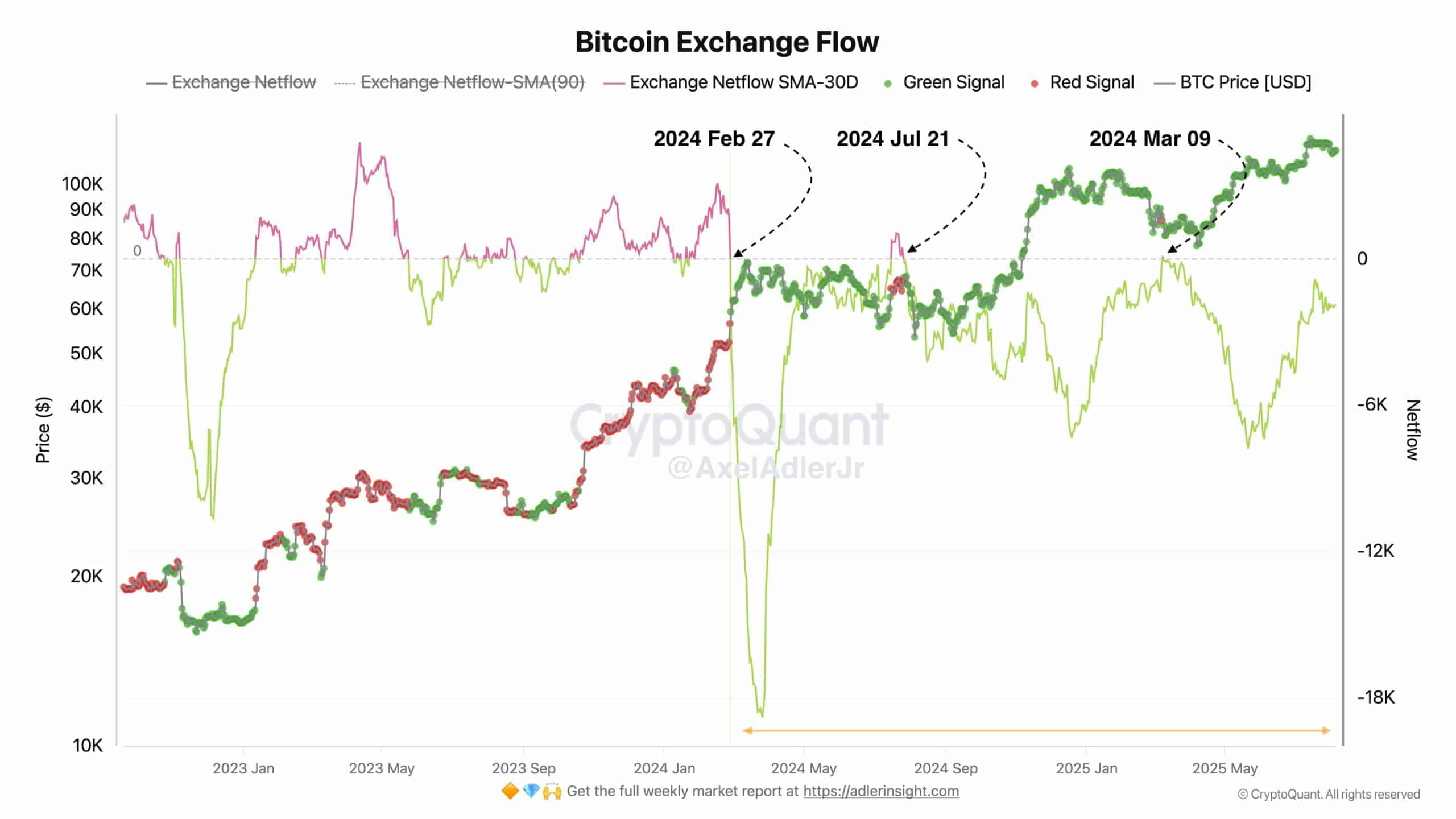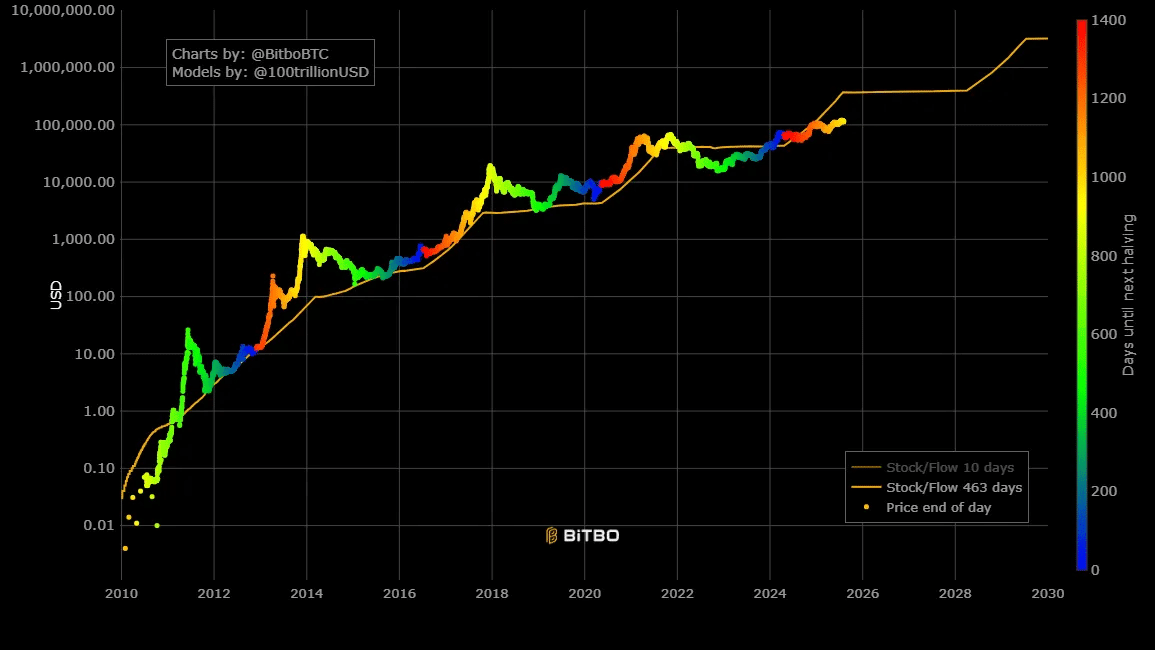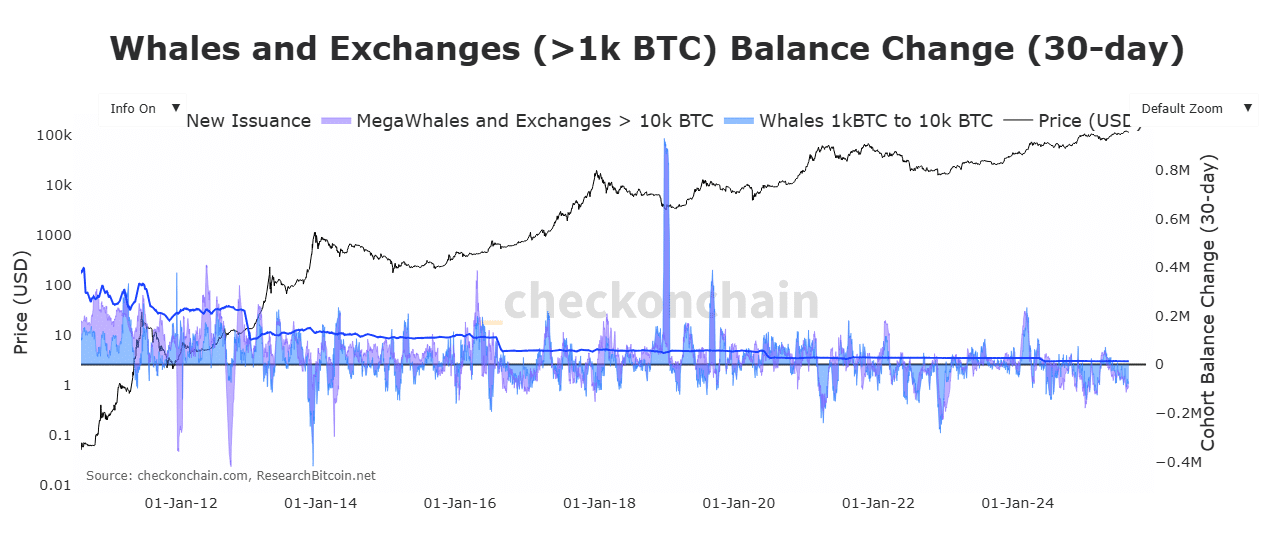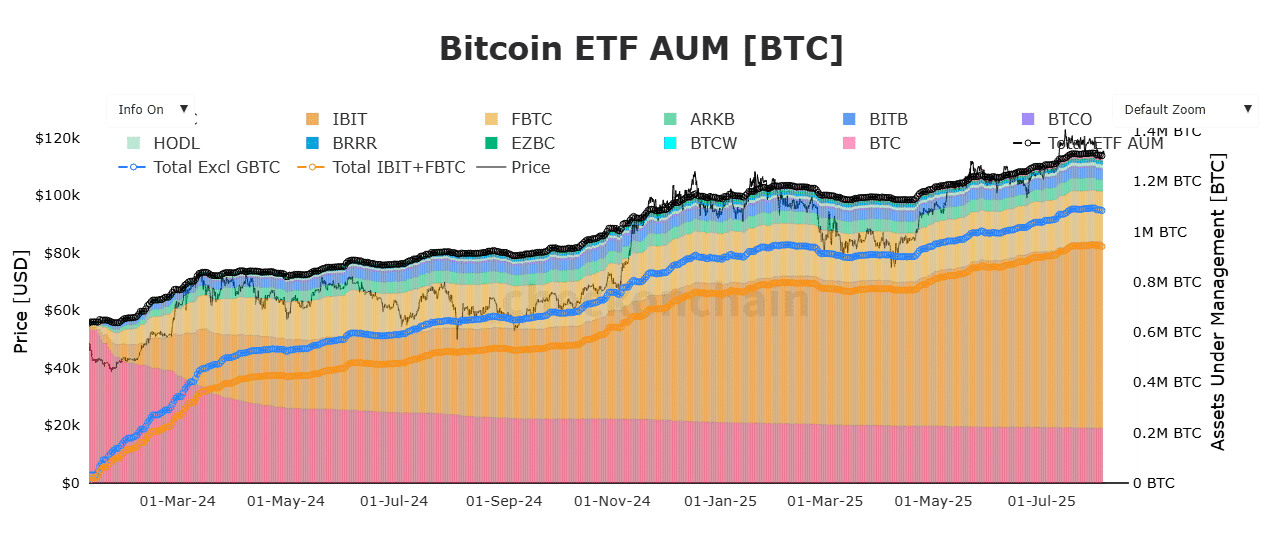
Bitcoin continues to grow thanks to scarce supply, primarily sustained by whales and institutional capital flows, rather than speculative waves from retail investors.
The prolonged liquidity shortage, combined with strong buying pressure from Bitcoin ETFs and whales, has kept Bitcoin prices above $100,000 for many months, despite the market experiencing several slight adjustments.
MAIN CONTENT
Recent Bitcoin price volatility mainly stems from supply crisis and whale accumulation rather than retail speculation.
Institutional capital flowing through Bitcoin ETFs contributes to reduced liquidity and pushes prices to consecutive ATH levels.
If whales begin to take profits heavily, the upward trend could reverse deeply, significantly impacting the market.
What sustains Bitcoin's long-term upward trend?
The current Bitcoin rally is mainly driven by persistent liquidity shortages, rather than retail speculation waves as in previous cycles. Actual data shows that supply is gradually depleting on exchanges, creating a supply crisis.
The scarcity of Bitcoin on the spot market has never been so profound, indicating that the upward momentum mainly comes from large funds rather than retail investors.
Axel Adler, CryptoQuant analyst, June 2025 (according to CryptoQuant/X)
On-chain data continuously records that the amount of Bitcoin withdrawn from exchanges exceeds that deposited, causing supply on the spot market to be choked. This process has lasted for months and is the main catalyst for the surge above the $100,000 mark.
Why is capital flow on exchanges a 'real-world test'?
The net amount of BTC withdrawn from exchanges daily is a direct signal reflecting buying-holding pressure versus selling-taking profit. Since the end of February 2024, there have only been 2 days of net BTC inflows into exchanges, with most of the remaining time being net withdrawals.
As capital continuously leaves exchanges, the circulating supply of BTC decreases steadily each day, contributing to natural upward price pressure.
CryptoQuant analysis report, June 2025
This forms a 'machine' creating real supply scarcity in the spot market. Short-term traders, whales, and institutions hold coins off-exchange to wait for prices to rise further, rather than selling and creating downward pressure.

Source: CryptoQuant
Bitcoin supply: What does the level of scarcity and Stock-to-Flow indicate?
Bitcoin's current Stock-to-Flow (S2F) index has reached 369.4K BTC, indicating that the rate of supply reduction continues to outpace the rate of new supply increase. A high S2F means a scarce asset, with sustainable long-term price increase potential if demand remains stable or grows.
If supply continues to dwindle while demand remains stable or increases, Bitcoin prices are likely to set new peaks in the future.
Bitbo, June 2025 report
The Stock-to-Flow model even projects theoretical prices up to $3.2 million for each BTC under extreme supply shortage conditions. In reality, every time Bitcoin enters a scarcity phase, the demand for accumulation increases sharply, causing prices to continuously set ATHs.

Source: Bitbo
How do Bitcoin whales affect supply?
Unlike previous cycles, whales are currently the key factors controlling supply, continuously buying while restraining selling despite record profits. Statistics from Checkonchain show that whale BTC balances on exchanges have sharply decreased, maintaining a continuous negative balance for the last 3 months.
Whales exhibit maximum caution, not rushing to sell even though the market has reached profit peaks. A sustained negative balance is a clear sign of a long-term accumulation trend.
Checkonchain, June 2025 report
By the end of June 2025, the BTC balance of whales recorded at -73K BTC, and the largest whale was at -19K BTC. This confirms a situation: if whales continue to hold and do not take profits, the upward trend will continue.

Source: Checkonchain
Bitcoin ETF market share and its impact on supply pressure?
An undeniable momentum comes from Bitcoin spot ETFs, as institutional capital flows have surged since the U.S. approved the ETF at the beginning of 2024. Currently, over 1.3 million BTC (equivalent to over $149 billion) are held by ETFs, creating immense supply pressure off the market.
The amount of Bitcoin held by ETFs has continuously increased sharply since the beginning of the year, creating a push that drives prices to unprecedented heights.
AMBCrypto report, June 2025
The volume of Bitcoin locked in ETF portfolios is steadily increasing, reflecting the trend that institutional investors also trust in the scarcity of supply. This is a major reason explaining why Bitcoin prices continuously hit ATHs despite the lack of significant inflows from retail investors.

Source: Checkonchain
How far can current demand take Bitcoin?
AMBCrypto's analysis shows that Bitcoin has overcome many correction waves while maintaining upward momentum thanks to buying pressure from institutions and whales. Limited supply, especially on exchanges, has become a 'bottleneck' driving prices up.
If ETF funds and whales continue to hoard, the gradually decreasing supply on exchanges will push Bitcoin to unprecedented price levels in history.
AMBCrypto, June 2025 summary
The positive scenario is that the large supply-demand zone continues to stabilize, at which point Bitcoin will soon regain the resistance level of $117,000 and aim for new price peaks. However, if there is a reversal of large capital flows (whales, institutions starting to sell en masse), Bitcoin could correct deeply, seeking support around $110,572.
Comparing factors affecting Bitcoin prices today
The comparison table below summarizes the main drivers affecting the current price increase of Bitcoin, helping to identify the role of each factor:
Factors influencing BTC price Reference data (6/2025) Whales accumulate Pushing prices up, limiting supply -73K BTC withdrawn from exchanges Institutional capital flow (ETF) Removing BTC from circulation, increasing market cap 1.3 million BTC held by ETFs, valued over $149 billion Retail capital flow Playing a minor role, lower than previous cycles No significant increase Stock-to-Flow Scarcity, the basis for sustainable long-term growth S2F index = 369.4K BTC
Reversal scenario: If whales take profits, what will be the consequences?
If whales and institutions begin to take profits after a long holding period, significant selling pressure will cause Bitcoin prices to drop sharply. History shows that whenever large wallets sell off, the market usually reacts with corrections stronger than expected.
Prices may quickly lose important support levels, testing the area around $110,572 or lower, especially if ETF capital flows also reverse. Panic with a chain reaction effect could drive deeper declines.
Thus, the success or failure of the long-term upward trend now largely depends on the decision to hold or sell coins by whales and large institutions, alongside the overall supply and demand pressure in the market.
Frequently asked questions about supply, whales, and Bitcoin ETFs
Why is Bitcoin's price rising sharply despite low participation from retail investors?
The upward momentum mainly stems from supply crisis, whale accumulation, and institutional capital flows through ETFs, rather than retail speculative waves.
What percentage of the total supply is managed by ETFs?
ETFs currently hold over 1.3 million BTC, equivalent to nearly 7% of the total circulating supply, according to Checkonchain June 2025.
What will happen if Bitcoin whales sell en masse?
Selling pressure will push the market into deeper adjustments, and Bitcoin prices are likely to lose support and seek lower bottom levels, with FUD potentially spreading.
What does Bitcoin's Stock-to-Flow index indicate?
This index reflects the level of scarcity; the higher the S2F value, the greater the potential for long-term price increase due to limited supply.
Are there any signs that whales have not taken profits yet?
The BTC balance on exchanges of whales has decreased sharply, maintaining a continuous negative balance, indicating that they are still accumulating rather than selling to take profits.
What impact do Bitcoin ETFs have on market liquidity?
Capital flows into ETFs lead to many BTC being 'locked' long-term, reducing the amount of coins circulating on exchanges, making the market scarce and prices easier to rise.
Can Bitcoin set a new ATH if large capital flows are maintained?
If institutions and whales continue to hoard, supply shortages remain, and the likelihood of Bitcoin breaking historical peaks is very high.
Source: https://tintucbitcoin.com/bitcoin-giu-moc-100-000-usd-do-thieu-thanh-khoan/
Thank you for reading this article!
Please Like, Comment, and Follow TinTucBitcoin to stay updated with the latest news about the cryptocurrency market and not miss any important information!

